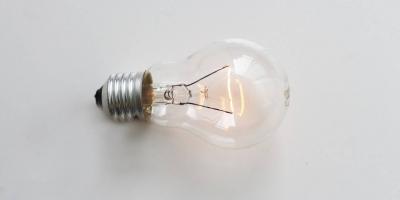Electricity is a significant resource for every Sydney household ‒ and we usually get power through municipal distribution lines.
In cases where a distribution line cannot reach your property, you can have an electrician install a private power pole for you.
Because of the rising establishments and private settlements around the city, private power pole installations have become an in-demand service when you need to re-route your cables from streets, trees, or walkways. It is also ideal when you want to remove the unsightly view of wires in front of your house.
Besides, installing a private power pole needs to follow local and municipal laws. Similar to building infrastructures, a poor private pole installation will only increase the risks of emergencies and safety hazards.
The laws involving private power pole installation in Sydney are networks of rules and regulations, covering not only the city but the entirety of New South Wales and Australia. Along those lines, here are the laws involving private power pole installation in Sydney:
Installation Permission
In the Electricity Supply (Safety and Network Management) Regulation 2014, network operators must ensure safe distribution and transmission of electricity. Safety operation includes taking all the reasonable steps such as the design, construction, commissioning, operation and decommissioning of its network (or any part of its network).
As the network operator and electric distributor ensure safety operations, you also need to secure clearances and permission from them before installing a private power line. In this way, you can make sure you are following all the legalities.
Excavation Process
After securing your permits and clearances, the next step before mounting your power pole is excavating the area of installation. However, excavating is not as easy as you think when in fact you are living in the city.
In places where cables are not hanging around within your neighbourhood, you can tap from underground cables buried near your property. The proper way of excavating for your private power pole includes:
- Knowing all the information about the location
- Determining any underground electrical power line in your vicinity
- Securing other information concerning the present underground power lines
- Obtaining permission to the underground electrical power lines within the vicinity
Tree Management Plans
The excavation process can inevitably affect any spots such as trees surrounding your household. The electrical distributor may establish a tree management plan such as trimming a tree or removing it in case of interference with power lines.
But in the case of private power pole installation, the energy distributor doesn’t hold any responsibility of trimming or removing the trees. You are responsible for managing the affected trees, and you need other services to handle it.
Moreover, removing trees is a dangerous thing. It’s better if you can consult other residents and the local council when doing it.
Private Pole Installation
After preparing the excavation process and tree management, you are ready for the actual installation. The NSW Service and Installation Rules provide strict guidelines when it comes to your power pole.
The NSW-SIR draws a clear line of customer’s boundary. From the connection point to the point of attachment in your household, anything in this premise is your responsibility.
Aside from the service and installation rule, installation needs to comply with the AS/NZS 3000. It includes the secure installation of a private power pole on the ground. However, if the soil is soft, the law allows the possibility of setting your pole at a greater depth using bearing blocks or shoes.
When mounting your private pole doesn’t reach the required depth, it is accepted to set the pole in concrete. But it needs to follow these circumstances:
- Pole is set at the centre of a borehole with a required standard size
- The concrete is placed not less than 300 mm below the ground
- It reduces the required pole sinking depth
- Concrete is undisturbed for three days to develop adequate strength before attaching the overhead service
In all such cases, obtaining a structural engineer’s certification will tell you that the mounting meets all the requirements. Besides this, the rules require the length of the pole, soil quality and type of post to obtain necessary clearances.
Pole Length
The service and installation rules take into account what type of soil you have before determining the size or length of the pole. Also, the type of soil determines the depth of your poles in the ground.
Soil Quality
The identification of what soil your area has is defined in AS/NZS 7000. It classifies the soil into poor, medium and good that will help determine how deep to bury your private poles.
Pole Types
Different types of poles are present to suit your environment and needs. Here are the three classifications of poles you can use in private power pole installation:
Timber Pole
The most prefered timber pole you can use is a treated one to prevent insect manifestations. AS/NZS 3000 sets out the minimum sizes of timber poles with the durability of Class 4 or better and a strength grade of S6 or better.
Using timber poles need environmentally approved treatment at the base against termites and fungal attack. Also, covering the top of the timber pole helps prevent water penetration.
Steel-pipe Pole
It is resistant to insect and fungal attack, but has a shorter life span than timber pole. The installation rules also set the required sizes/grades for steel-pipe poles. And capping the top is vital to prevent water entry.
Other Poles
When the first two poles are not possible, then other suitable materials such as reinforced concrete or precast concrete is acceptable. But this needs certification of strength and durability with the approval of the power distributor.
Installation Verification
After all the installation process, the testing and inspection of your private power pole is crucial. Tests and inspections are carried out to ensure that your pole is working correctly and safely.
If you surpass the verification process, this means you followed all legalities and rules for installing a private power pole. Moreover, the verification process can help you trace if ever there are problems after the installation.
Conclusion
Installing a private power pole can help you feel safer as cables won’t be hanging around and impede walkways or streets. Also, following the laws in installing a private pole highlights an orderly and standardised process to ensure your safety.
Furthermore, becoming a law-abiding citizen when it comes to private power pole installation contributes to the peace and order of Sydney. Also, following the rules can give you a legal basis, protecting you in cases of future mishaps.
Gordon Powers is your partner when it comes to the laws, rules and regulations of a private power pole. We can help you from the permits to the installation of a private power pole following strict compliance and safety measures.
For private power pole installation, call us today on (02) 9199 7480.










